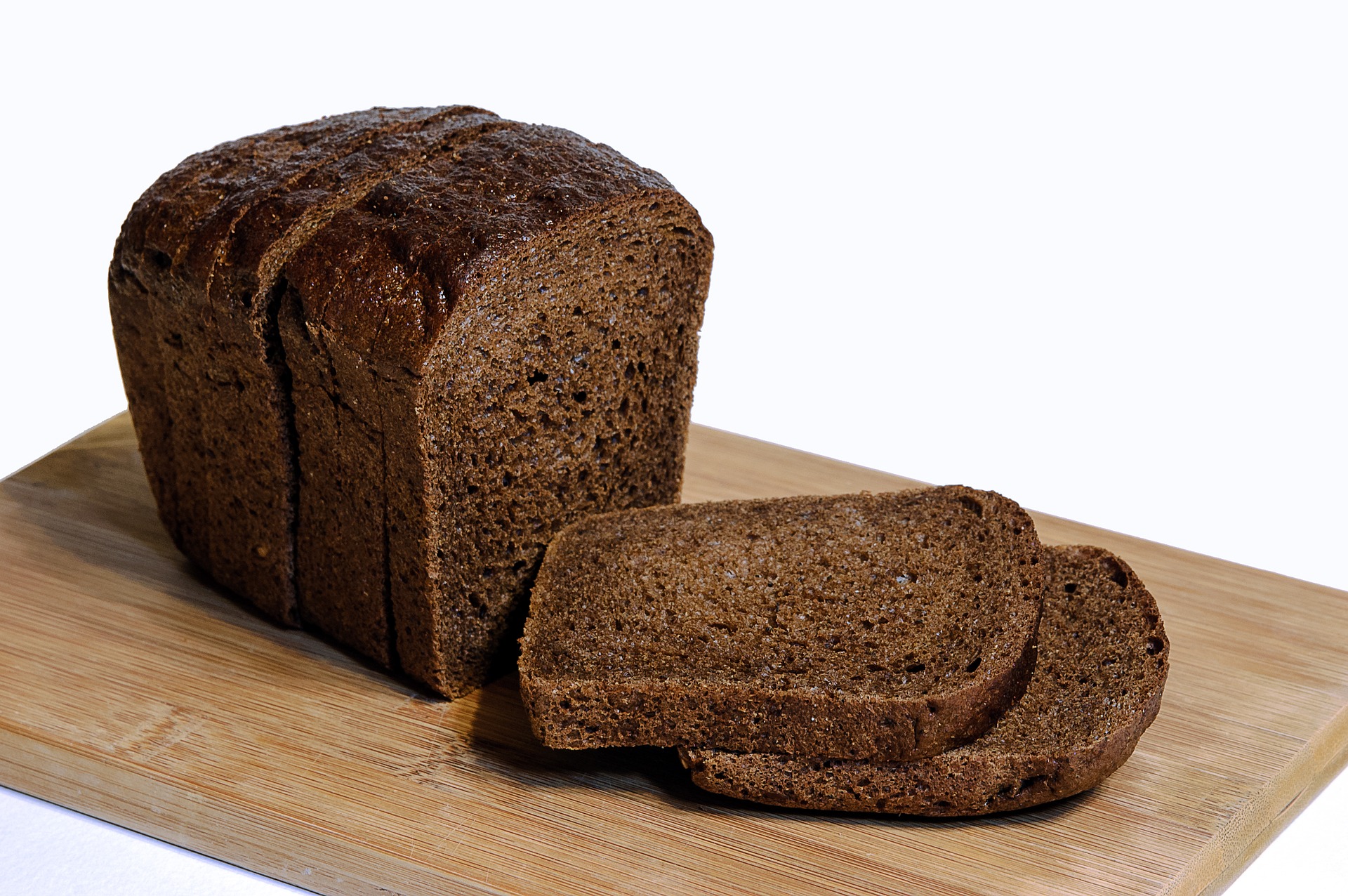When choosing a more unique type of loaf, do you go with pumpernickel bread or rye bread?
- Pumpernickel: a course, dark, slightly sour bread made of unbolted rye.
- Rye: Bread that is made either entirely or partly from rye flour, often with caraway seeds.
Both pumpernickel bread and rye bread:
- Consist of rye flour.
- Typically also contains white or wheat flour.
- Can include caraway seeds.
Rye flour, as described in Mark Bittman’s How to Cook Everything: “Milled from rye berries, a grass similar but different from wheat. The flour is graded dark, medium, or light, depending on how much bran is milled out.”
As you can note from the above photo, rye is a cereal grain that indeed resembles wheat. It is difficult to separate the germ and bran from the endosperm of rye, allowing it to retain more nutrients than other flours.
Rye, and subsequently rye flour, is a key ingredient in both pumpernickel bread and rye bread.
Bittman continues: “The darker the flour, the stronger the flavor and the higher protein and fiber. . .Because it has a low gluten content, rye flour is almost always combined with white flour. But even if your ratio is high in wheat flour, baked goods made with rye flour tend to be moist, dense, deeply colored, and slightly (deliciously) sour tasting. Pumpernickel flour is dark whole grain rye.”
Because of the lack of yeast in rye flour, it is often paired with white or wheat flour. Although, reportedly the original German version of pumpernickel bread is made with rye flour and rye meal – the Americanized version often adds molasses, coffee, or cocoa powder.
In addition, American pumpernickel bread is often prepared without a loaf pan, giving it a round shape. The round pumpernickel bread is excellent for housing a dip.
Pumpernickel is sweeter than rye bread, due to the longer baking time. It has just a hint of sourness to it. With its firm outside and moist inside, pumpernickel allows for a savory, multi-textured eating experience. Looks-wise, it often resembles a dark rye bread. Which brings us to:
Rye bread – it can be dark, light, or a combination of both.
Light rye bread is made with white rye flour. The white rye flour is created from grinding the rye berry’s endosperm. In other words, the flour will not contain the seed coat, bran, or germ.
Dark rye bread can be made two different ways: one with white flour and a coloring agent, such as molasses, and the other using a different grind of rye flour. This second and more common way of making dark rye bread uses the flour milled from the endosperm of the rye berry. The flour tends to be ground very coarsely.
Marbled rye, which is so pretty, is a combination of light and dark rye breads.
In conclusion, rye bread is made from endosperm ground flour while the flour in pumpernickel bread utilizes the entire rye berry.

This is interesting. I stopped putting my dips in the rye bread because the dip softens the bread to mush. So not only the color presentation but for dipping I’ll have to try it. Thanks.